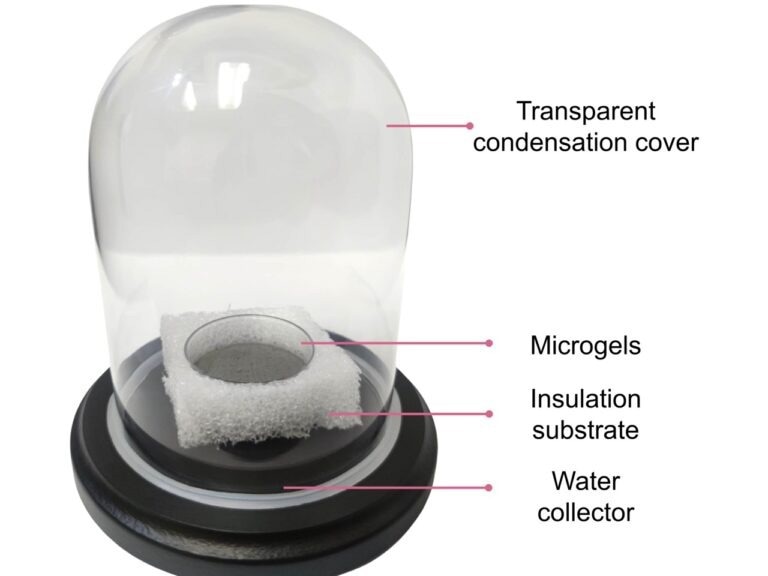A ray of hope might be on the horizon for areas suffering from water scarcity: the capacity to efficiently convert heated air into drinkable water.

Image Credit: The University of Texas at Austin
Researchers at The University of Texas in Austin have been studying the moisture in the air as a potential supply of drinking water for drought-stricken people for several years. A huge advance in manufacturing drinking water out of thin air has been reported in a new study published in the Proceedings of the National Academy of Sciences, where researchers developed a molecularly designed hydrogel that can create clean water using just sunlight energy.
The researchers were able to extract water from the atmosphere and make it drinkable using solar energy in temperatures as low as 104 degrees Fahrenheit, which corresponds to summer weather in Texas and other regions of the world. That means that individuals in areas with high temperatures and limited access to clean water could possibly install a device outside and it would produce water for them with no further effort.
With our new hydrogel, we are not just pulling water out of thin air. We are doing it extremely fast and without consuming too much energy. What’s really fascinating about our hydrogel is how it releases water. Think about a hot Texas summer—we could just use our temperatures’ natural ups and downs, no need to crank up any heaters.
Guihua Yu, Professor, Materials Science and Engineering, Walker Department of Mechanical Engineering, Cockrell School of Engineering, The University of Texas at Austin
Depending on humidity, the device can produce between 3.5 and 7 kg of water per kilogram of gel ingredients.
The hydrogel’s adaptation into microparticles known as “microgels” is an important aspect of this research. These microgels enable the advances in speed and efficiency that put this technology closer to reality.
By transforming the hydrogel into micro-sized particles, we can make the water capture and release ultrafast. This offers a new, highly efficient type of sorbents that can significantly enhance the water production by multiple daily cycling.
Weixin Guan, Study Lead and Graduate Student, The University of Texas at Austin
The researchers are working to refine the technology further to turn it into a marketable product. One area of research is improving the engineering of microgels to increase efficiency.
Scaling up is a critical next step. The researchers hope that their work can be translated into concrete and scalable solutions that could be utilized globally as a low-cost, portable means of producing clean drinking water. This could influence the lives of people in countries like Ethiopia, where over 60% of the population lacks basic access to clean water.
We developed this device with the ultimate goal to be available to people around the world who need quick and consistent access to clean, drinkable water, particularly in those arid areas.
Yaxuan Zhao, Graduate Student, The University of Texas at Austin
The team is developing other versions of the gadget made of organic materials, which would minimize the cost of mass manufacturing. This shift to more commercially feasible designs has its own set of issues in terms of scaling manufacturing of the sorbent that facilitates moisture absorption and ensures durability during the product’s lifecycle. Research is also being conducted to make the devices portable for a variety of application scenarios.
The Welch Foundation’s Norman Hackerman Award in Chemical Research and the Camille Dreyfus Teacher-Scholar Award are both supporting this study.
Journal Reference:
Guan, W., et al. (2023) Molecularly confined hydration in thermoresponsive hydrogels for efficient atmospheric water harvesting. Proceedings of the National Academy of Sciences. doi:10.1073/pnas.2308969120